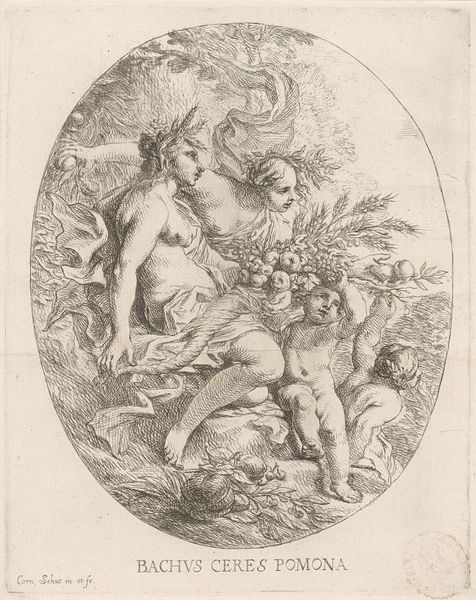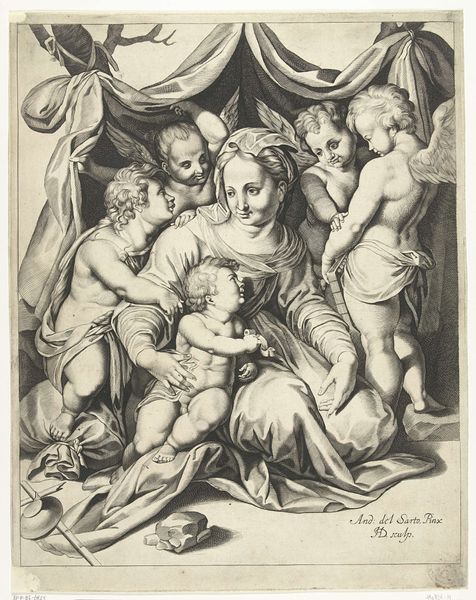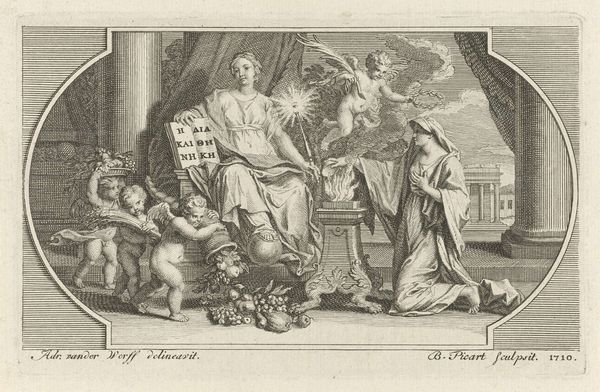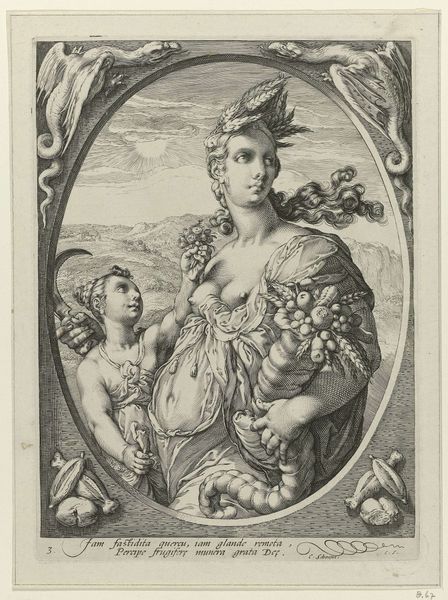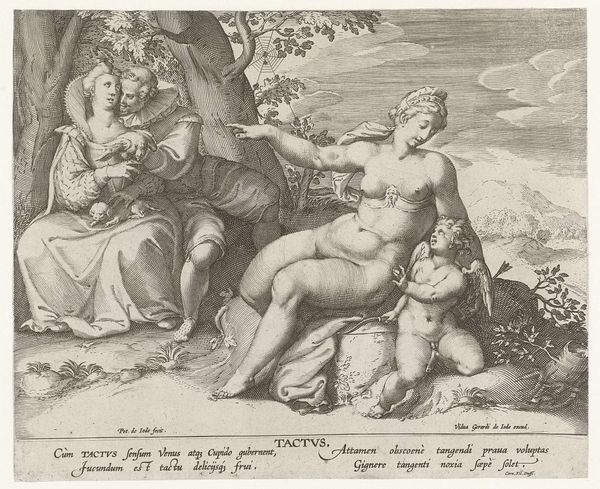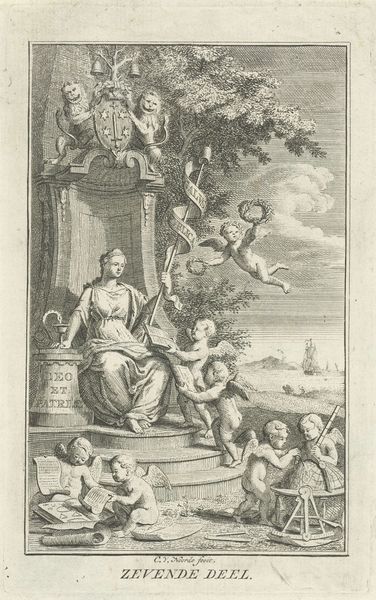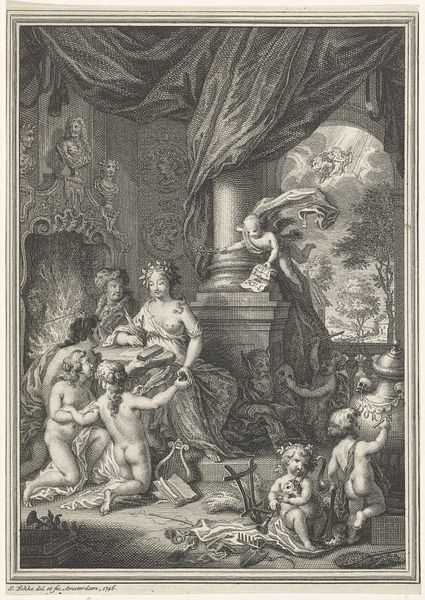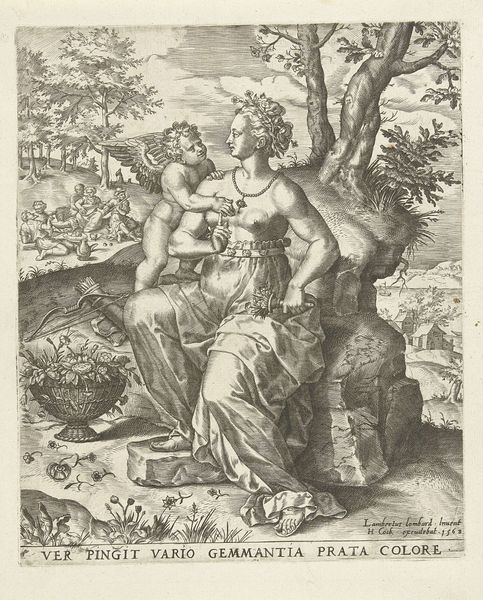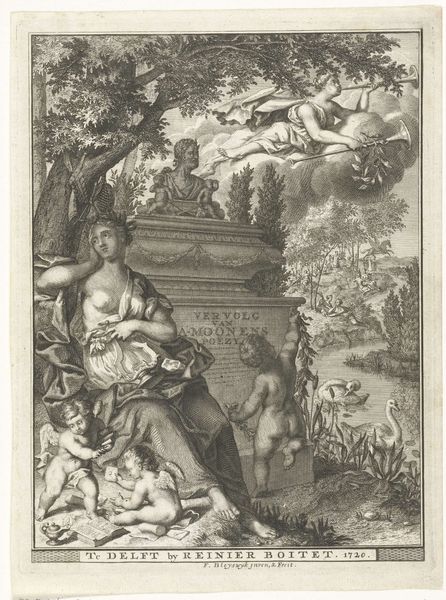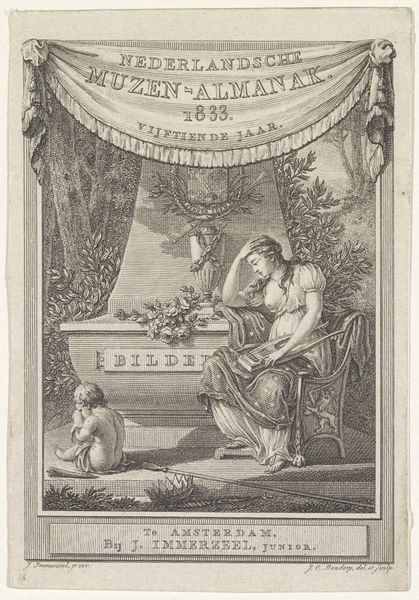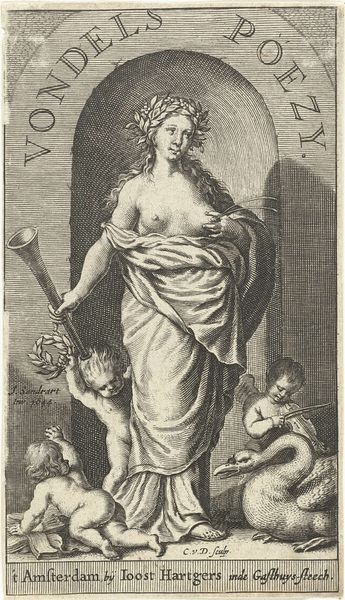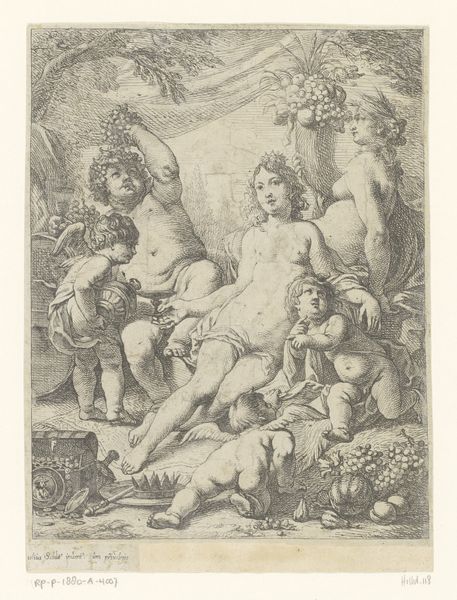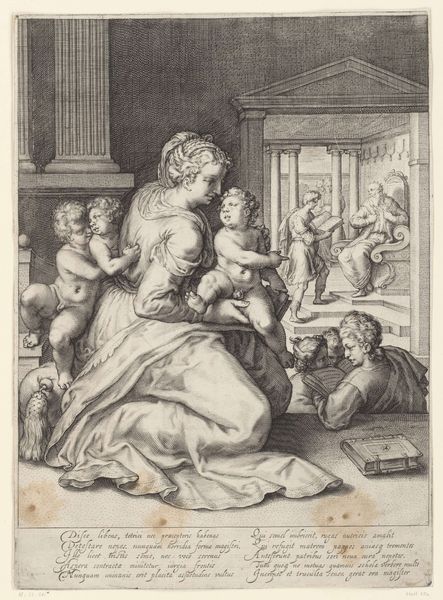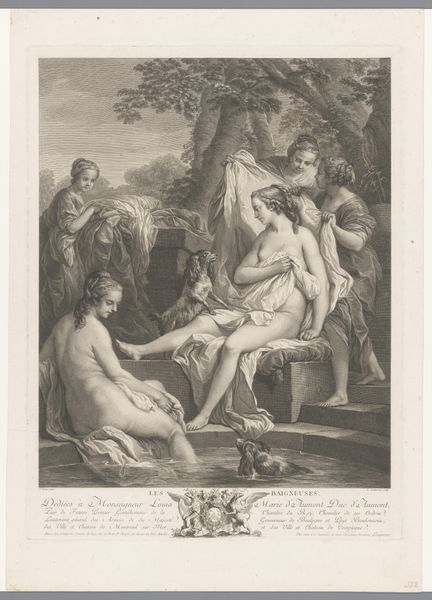
engraving
#
baroque
#
figuration
#
history-painting
#
nude
#
engraving
Dimensions: height 85 mm, width 87 mm
Copyright: Rijks Museum: Open Domain
Curator: Just look at this froth of detail! The textures feel so rich, even in monochrome. Is it a dream, a memory, or a fleeting glimpse into a world of playful mythology? Editor: You've tuned in to examine "The Triumph of Galatea," an engraving created between 1683 and 1733 by Bernard Picart, part of the Rijksmuseum collection. It presents the Nymph Galatea amidst sea creatures and putti. Curator: Ah yes, Galatea, forever a subject of fascination. The composition directs our gaze straight to her. But who was this piece intended for? And how did its acquisition and display add to the construction of artistic and cultural power during the baroque era? The museum has many choices on what works they choose to acquire. Editor: Very much a performance of power, the scene brimming with allegorical intent. Consider how dolphins and cherubs function symbolically in this representation, echoing love, fertility, and transformation themes that remain culturally resonant. We see the persistence of classical ideals through a unique, and maybe ironic, artistic lens. The ocean is an enormous well of symbolic resonance. Curator: The decision to depict her nude undoubtedly plays into baroque ideals of beauty and perfection but may reveal cultural dynamics related to desire, the male gaze, and public display. A political game. Editor: Indeed. It invites discourse regarding gendered representation. Note the visual and symbolic associations that intertwine classical and early modern notions. This enduring theme encourages a deep examination of beauty, sexuality, and our interconnectedness with mythology. I find the cultural memory it triggers strangely poignant. Curator: These works force us to question who we're inviting to our institutions, who do we see being engaged with our nation's story, and, ultimately, who is invited to re-imagine our community’s role. It brings so many issues to the fore when placed in public collections. Editor: An art piece of intriguing social implications and compelling symbolism to ponder.
Comments
No comments
Be the first to comment and join the conversation on the ultimate creative platform.
